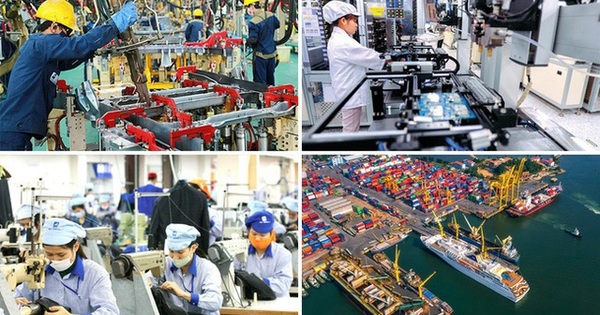Vietnam to resume swift medium-term economic growth
VOV.VN - The nation is poised to resume rapid economic growth over the medium-term economic outlook, with the “rising star” being one of the fastest growing emerging markets in Asia, according to details given by foreign newswires.
In an article published on the website of S&P Global Market Intelligence, Asia Pacific Chief Economist Rajiv Biswas outlined that Vietnam is expected to continue to be a key beneficiary of the shift in global manufacturing supply chains towards competitive Southeast Asian manufacturing hubs.
He stated that the country will continue to benefit from its relatively lower manufacturing wage costs relative to coastal Chinese provinces. Indeed, it boasts a relatively large, well-educated labour force compared to many other regional competitors throughout the region, thereby making it an attractive hub for manufacturing production by multinationals. Along with this, many multinationals have been in the process of diversifying their manufacturing supply chains during the past decade as they seek to reduce vulnerability to supply disruptions and geopolitical events.
The nation is also set to benefit from its growing network of free trade agreements such as the ASEAN Free Trade Agreement (AFTA), the Comprehensive and Progressive Agreement for Trans-Pacific Partnership (CPTPP), the EU-Vietnam Free Trade Agreement (EVFTA), and the Regional Comprehensive Economic Partnership (RCEP), Biswas added.
The Economic Times explained that the country is among the economies likely to benefit from the global supply chain changes, whilst it has done relatively well in attracting big names over the past few years such as Samsung, Apple, Google, Nike, and Adidas.
On Eurasia Review, analyst and journalist Matija Šerić cited PricewaterhouseCoopers as saying that the nation is already a regional (middle) power, and in the future it could become an even stronger power in Asia and in the Indo-Pacific region as a whole, with its influence potential being even wider. By 2050, the Vietnamese economy could be the 10th largest in the world.
Experts therefore include Vietnam among the group of Next-11 countries, including Egypt, Mexico, Nigeria, and others, which together with the BRICS (Brazil, Russia, India, China, and South Africa) will be among the largest world economies of the 21st century.
Šerić noted that there are three main factors that have contributed to the rapid rise of GDP growth, production, and investments. The first factor refers to the almost maximum liberalisation of trade with Asia and the rest of the world, with another factor being domestic reforms through the deregulation of the economy and the lowering of labour prices. The third important factor is large investments through public investments in human and material capital.
The International Monetary Fund (IMF) projected that Vietnamese economic growth will recover in the second half of the year, hitting roughly around 4.7% for the year, supported by a rebound in both exports and expansionary domestic policies. Inflation is also projected to remain contained below the State Bank of Vietnam’s 4.5% ceiling.
Participants in the 14th Annual Meeting of the New Champions of the World Economic Forum (WEF) in Tianjin, China, in late June outlined that Vietnam is one of the bright spots in terms of economic recovery in the region and a successful example in the pandemic combat, whilst also playing a pioneering role in changing its growth model and committing to energy transition.
Titled “Vietnam: A rising star in emerging markets”, an article published on US-based websiteportfolio-adviser.com outlines there is frequent hope that the nation will be upgraded from its current, off-benchmark, frontier market status to emerging market status by the MSCI. This comes amid its stock market now meeting the size and liquidity requirements to be included, with a four-fold surge in retail participation during recent years driven by digital account technology.
However, the limiting factor is the strict foreign ownership limits (FOLs) that constrict the market depth, it added.


